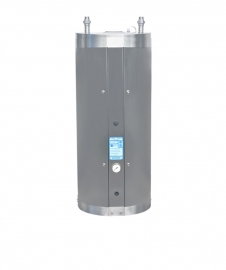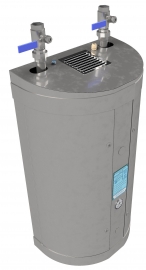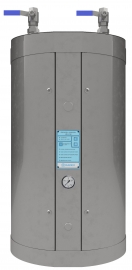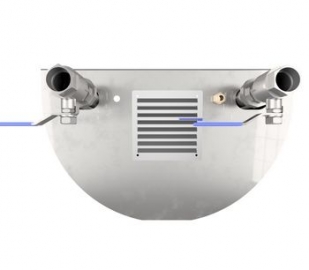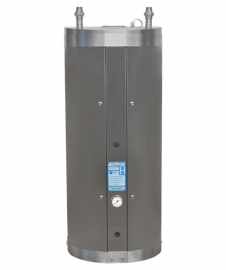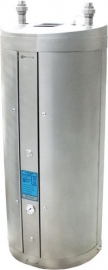Pump unit JPR 3/5/10
A pump unit – an elementary part of the Central Cleaning System.
This unit has been designed to increase water pressure of the onsite installation connected to satellite stations. Connecting the pump unit to sanitary stations enables efficient use of water in the cleaning processes (foaming, rinsing, disinfecting). Pumps work both with satellite stations with locally provided chemical agents and with centrally provided chemical agents.
Our advisors select JPR pump units together with complete systems according to individual requirements of our clients. Each pomp unit has different working parameters and when combined with satellite stations it helps maintain the required level of hygiene at a facility.
JPR pump units are typically equipped with a line of sensors that safeguard against overheating or dry work. Standard equipment also includes a leak sensor that stops the pump from working. This solution saves both water and electrical energy. A different type of the used safeguard is turning off the pump when water pressure drops significantly, below 10 bars on the 20 bar collector. The cause may be, for instance, a damaged pipeline.
A JPR pump unit plugged into a cleaning installation starts automatically after a flow of water is detected.
Each unit is always equipped with:
- Flow sensor and low water pressure sensor
- Water temperature sensor
- Low water pressure at the pump outlet sensor
- Electronic control system
- Engine connector with thermal safeguard
Optional equipment:
- Digital control panel,
- SoftStart system responsible for starting up and stopping the pump mildly. It prevents unnecessary hydraulic impacts associated with the pump’s start-up.
- Power inverter responsible for starting up and stopping the pump mildly. It prevents unnecessary hydraulic impacts associated with the pump’s start-up. At the same time, the power inverter maintains the set work pressure by regulating the rotational speed of the pump. When the pump is taking in water, it maintains low rotational speed so it doesn’t use much power.
Technical Data:
| Electrical data: | JPR 3 | JPR 5 | JPR 5-32 | JPR 10 |
| Motor power: | 2,2kW | 4,0 kW | 5,5 kW | 7,5 kW |
| Mains frequency: | 50 Hz | 50 Hz | 50 Hz | 50 Hz |
| Voltage: | 3x380-415V DV | 3x380-415V DV | 3x380-415V DV | 3x380-415V D/ 660-690 Y V |
| Rated current: | 4,45 A | 7,9 A | 11 A | 14,4 – 14,0 A / 8,30 – 8,10 A |
| Starting current: | 850-950% | 1000-1110% | 1080-1180% | 780-910% |
| Cos phi: | 0,89-0,87 | 0,87-0,87 | 0.87-0.82 | 0,88-0,82 |
| Rated speed: | 2890-2910 rpm | 2920-2940 rpm | 2920-2940 obr./min | 2910-2920 rpm |
| Max water output [m³/h] | 4,5 | 6 | 8,7 | 13 |
|
Max number of stations working simultaneously: |
|
4-5 |
4-5 | 7 |
| Max inlet water pressure: | 2,0 | 2,0 | 2,0 | 2,0 |
| Max outlet water pressure: | 17,0 | 19,0 | 25 | 23 |
| Max inlet water temp: | 70 | 70 | 70 | 70 |

